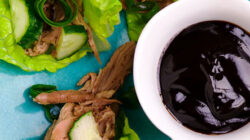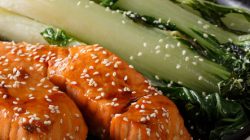The Rise in Demand of Organic Food Ingredients
***Check out our USDA Organic Certified Options***
Certified Organic Soy Sauce – 5315 Certified Organic Wheat Free Soy Sauce – 5368
Certified Organic White Miso – 6115
Across the retail and grocery landscape, businesses and food manufacturers are ramping up their organic investment to match the rising demand from today’s health-conscious, transparency-seeking consumer. And it’s showing a healthy return for all involved.
The popularity of natural farming methods and food sourcing that favors real, unblemished ingredients has propelled organic ingredients far beyond a clean eating food trend into a lifestyle for an ever-growing number of consumers.
The rise in organic demand
The perceived health benefits have shown that they far outweigh the actual costs.
In fact, the “Better for You” flag that organic food producers fly has broken through to the consumer mindset, disrupting their brand loyalties as well as making them dig a bit deeper into their wallets to support a clean label. And those who don’t feel like stretching the budget have even begun growing their own food gardens.
The goal, first and foremost, is to put the right products in your body. Which is how this industry has catapulted forward in the last five years.
The Organic Trade Association reported an incredible uptick in organic food sales from $3.3B in 2015 to $43B in 2016. That was 5.3% of total food sales at the time, but now TechSci Research estimates that we’ll see a compound annual growth rate of more than 14% through 2021.
The definition of organic foods
According to Food Dive, an organic certification must outline how the item was produced and the ingredients can’t contain any antibiotics, artificial colors, genetically-modified elements or synthetic pesticides. And while fraud isn’t uncommon in the marketplace as everyone tries to enter the market, the organic seal’s integrity is being heavily guarded by the Organic Trade Association.
The Pew Research Center maintains that certified organic farms must follow animal health and welfare standards, and their land must be “clean” and free of all these prohibited substances at least three years prior to harvest.
Finding organic food sources
As more farmers make the jump into growing, harvesting, processing and transporting organic products, the current demand has businesses working with farmers to outline their organic needs two to three years in advance so they can plan and invest to get the right product on the shelves. Nevertheless, as the demand grows, so, in turn, has the supply.
Mercaris reports that, due to the demand for organic food, the number of farms is increasing, up 30% from 2016 to 2017. The U.S. Department of Agriculture’s National Agricultural Statistics Service reported more than 14,000 certified organic farms in the United States in 2016 – a 56% increase from 2011.
Big business is going organic
Amazon’s acquisition of Whole Foods Market in 2017 was another clear signal that businesses believe this consumer behavior is no fluke and are making every effort to grow their share of the marketplace, or risk having it eaten up by the competition. Panera Bread led the way for fast casual restaurants by removing artificial flavors and colors along with preservatives and sweeteners from its food, and YUM Brands (KFC, Pizza Hut, Taco Bell) plans to have completely clean menus by 2020.
Every day this demand is leading food manufacturers to diversify their portfolios to create new organic offerings that meet the food and fiber needs of consumers. This wave within the organic sector is seeing changes to certifications and policies as well.
Adding organic to your diet
The most popular organic items are still fruits and vegetables, which accounted for 40% of all organic food sales in 2017 per the Organic Trade Association. Now, almost 15% of all fruit and veggies eaten in the United States are organic, but as more consumers’ food purchases are aligning with their own food philosophies, the organic possibilities are seemingly endless.
Technomic reports that health-conscious consumers dining preferences have shifted for good. 61% of them look for natural ingredients on the menu, 35% look for organic ingredients and 31% look for local ingredients.
Add organic foods to your shopping list
If you’re looking for enhanced flavor without any chemically-processed or synthetic ingredients, shop the Nikken Foods’ clean label pantry. Plus, don’t miss your chance to try our new USDA Certified Organic soy sauce powders and White Miso!
Learn more about Nikken Foods’ sustainability process and commitment to being socially responsible and environmentally friendly.



